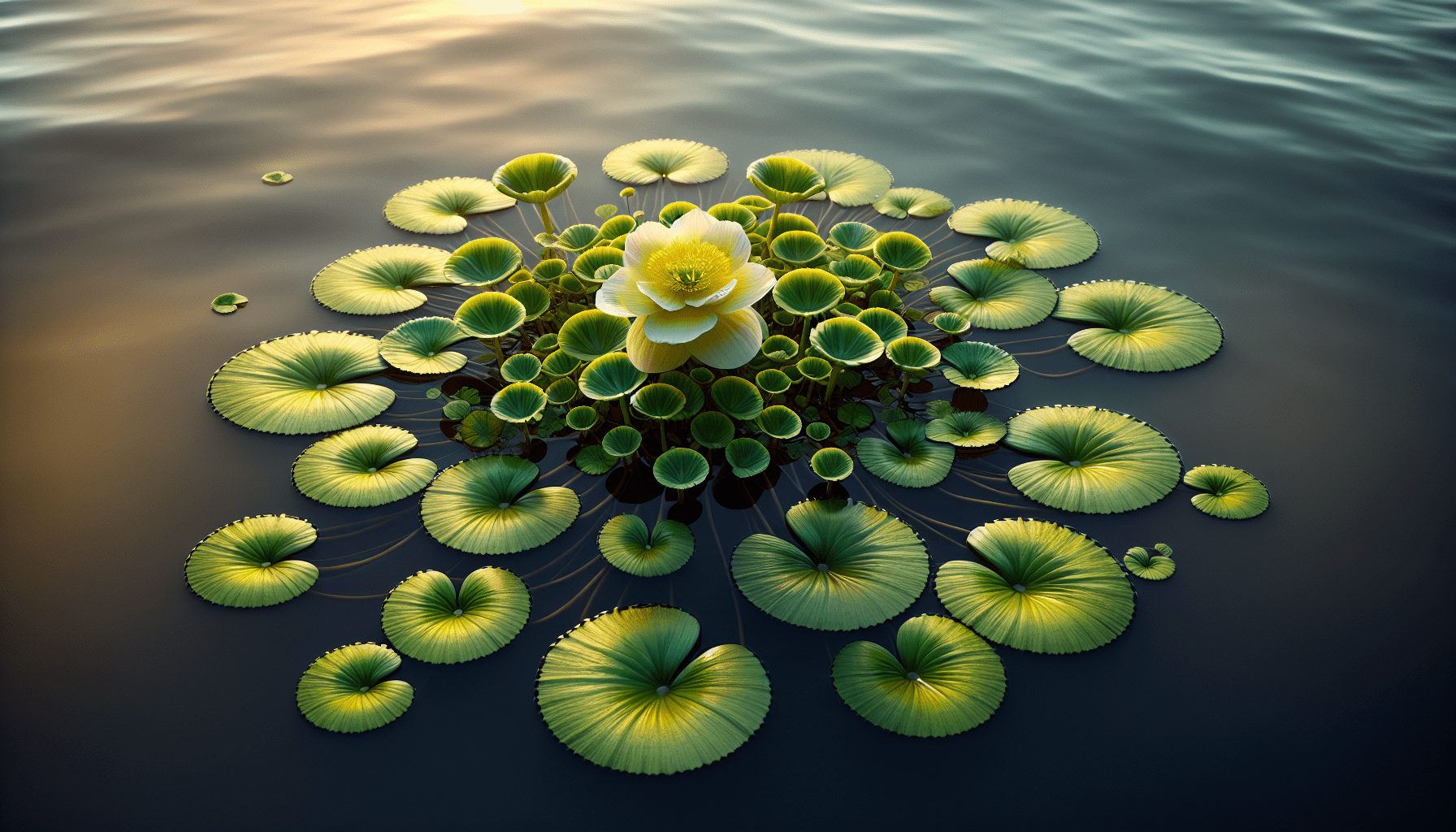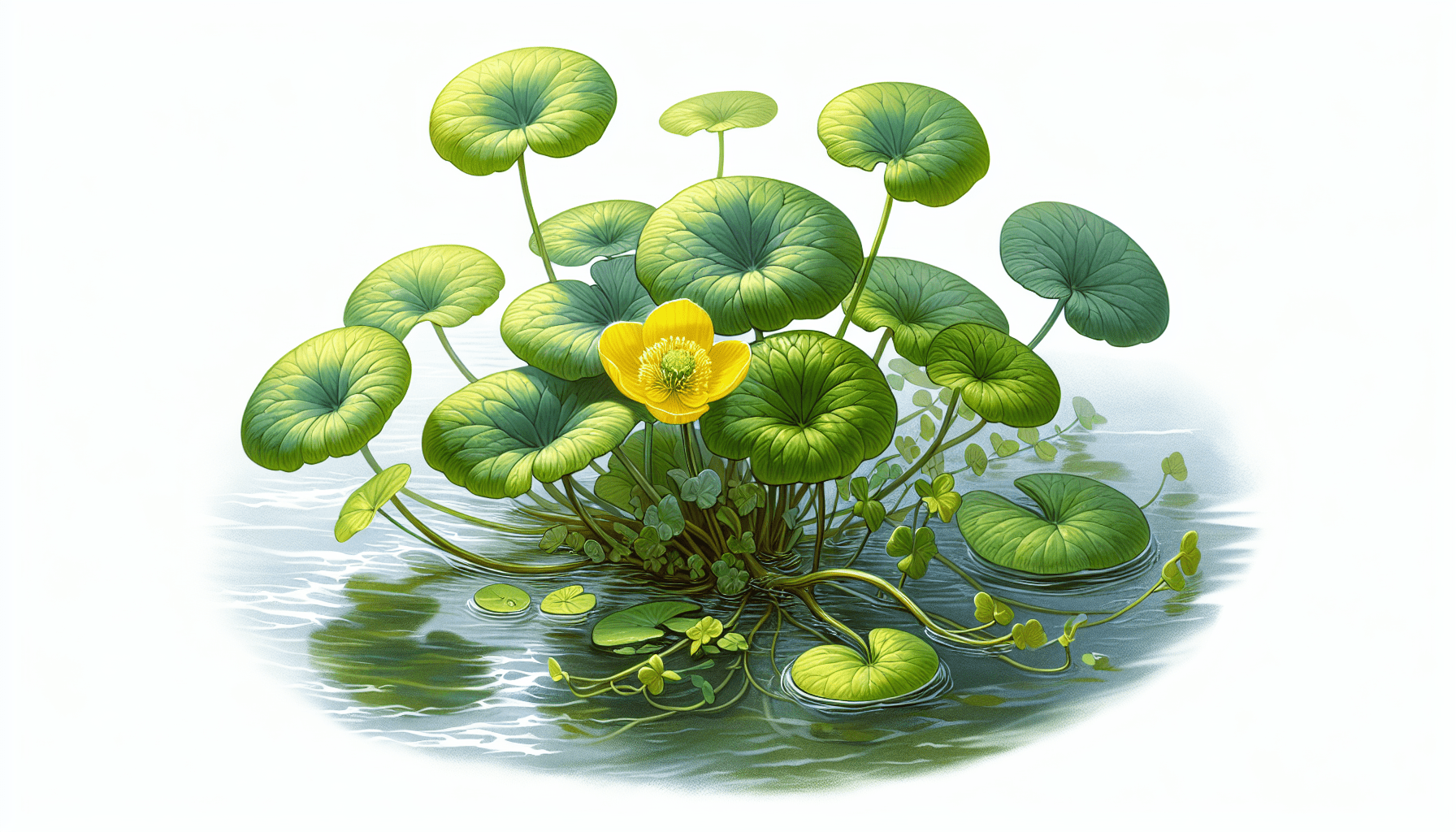As you embark on a journey through the exotic and vast world of aquatic plants, one specimen you may come across is the water poppy. Intriguing and complex, the water poppy demands thorough examination to comprehend fully its place in the ecosystem and its unique attributes. With vivacious yellow flowers that float atop its lobed leaves, the aquatic epiphyte boasts functionality beyond its ornamental value, serving a significant role in reducing water temperatures, providing shade and shelter for marine life, not to mention its contribution to the biodiversity of our planet. The following article aims to provide an in-depth exploration of this fascinating plant, elaborating on its taxonomy, morphology, reproductive strategies, and ecological significance. By scrutinizing the water poppy’s intricate details, your understanding of aquatic flora will expand, enhancing your appreciation of the natural world’s astonishing diversity.

Understanding the Aquatic Plant Water Poppy
The aquatic plant water poppy, also known by its scientific name Hydrocleys nymphoides, is a fascinating member of the plant kingdom that thrives in water-centric ecosystems.
Characteristics and Description
As a perennial, floating aquatic plant, the water poppy presents a unique array of characteristics which differentiate it from other aquatic plants. Its small, glossy green leaves are heart-shaped or kidney-shaped, floating on the water surface, making the plant immediately identifiable. The water poppy is notable for its bright yellow flowers, usually about two inches in diameter, giving it a lotus-like appearance. Each flower typically has three petals, ornamented with a cluster of stamens in the center.
Scientific Classification
In the realm of scientific classification, the water poppy falls under the kingdom Plantae and the order Alismatales. It belongs to the family Alismataceae and the genus Hydrocleys. Often referred to by its binomial name, Hydrocleys nymphoides, the water poppy shares its genus with only one other species, signifying its unique nature.
Native Regions
Initially, the water poppy originated in Central and South America and the Caribbean regions. Due to its beauty and significant ecological role, it has since been introduced to other parts of the world, where it flourishes under optimum aquatic environments.
Growth and Cultivation of Water Poppy
The cultivation of the water poppy can be an interesting endeavor if embarked upon with a knowledgeable perspective on its growth requirements and propagation techniques.
Ideal Conditions for Growth
Water poppies thrive best in full sun to partial shade and prefer stagnant or slow-moving water bodies. They are tolerant of various water qualities, but optimum growth is observed in slightly acidic to neutral conditions with a pH range of 6.1 to 7.5.
Life Cycle
As a perennial plant, the life cycle of the water poppy spans multiple years. Typically, the water poppy begins flowering in late spring and continues until the fall, depending on the climate of its habitat. The plant’s floating leaves provide a vital platform for the growth and emergence of flowers, an integral part of its life cycle.
Propagation Methods
The water poppy propagates by means of both seeds and division of rhizomes. Seeds are generally dispersed by water currents. However, in a cultivated garden pond environment, the division of rhizomes is more commonly used for propagation.
Water Poppy’s Role in the Ecosystem
The water poppy plays an essential role in its ecosystem, contributing to nutrient cycling, providing habitat and food, and influencing aquatic biodiversity.
Involvement in Nutrient Cycling
As an aquatic plant, the water poppy plays a role in cycling nutrients like nitrogen and phosphorus. Its ability to absorb these nutrients from the surrounding water helps in maintaining water quality.
As a Habitat and Food Source
The water poppy offers habitat and protection to various aquatic creatures like frogs and fish. Some insects may use it as a food source or breeding ground. The plant can also serve as food for certain herbivorous animals.
Impact on Aquatic Biodiversity
By creating a natural habitat, the water poppy significantly impacts the aquatic biodiversity of its ecosystem. While it provides cover and breeding sites for various aquatic organisms, it also competes with other species for resources, thereby influencing the composition of the ecosystem.

Water Poppy: Friend or Foe?
The water poppy can be a friend or a foe, depending on the perspective and circumstances at hand.
Benefits to Aquatic Life and Water Quality
The water poppy’s capacity to absorb nutrients from the water can help improve water quality by preventing excessive nutrient buildup. It provides a habitat for various fauna, thereby enhancing biodiversity.
Potential for Invasiveness
Despite its benefits, the water poppy has the potential to become invasive due to its vigorous growth and reproductive capabilities. If not managed properly, it can spread quickly and outcompete native plants, upsetting the balance of the ecosystem.
Control and Management Techniques
Control and management techniques for the water poppy include mechanical removal, use of herbicides, or introduction of natural enemies like certain types of insects. However, each of these methods should be used judiciously to avoid harming non-target organisms.
Cultural Significance of the Water Poppy
The water poppy holds various cultural connotations, appearing in folklore, tradition, and arts and literature throughout history.
In Folklore and Tradition
Although specific folklore or traditions associated with the water poppy are not widely documented, aquatic plants in general have a rich history in mythology due to their significance to water spirits and deities.
Symbolism Across Different Cultures
In different cultures, the water poppy may symbolize tranquility, peace, and purity due to its tendency to thrive in serene, water-filled habitats.
Use in Arts and Literature
The water poppy, with its vibrant yellow blossoms and glossy green leaves, constantly inspires artists and writers, symbolizing beauty, growth, and the richness of aquatic life.
Water Poppy in Horticulture and Gardening
The water poppy is a popular choice for water gardens and ponds due to its aesthetic appeal and ease of cultivation.
Cultivation in Garden Ponds
The water poppy makes an excellent addition to garden ponds, where it provides a captivating visual element. It is easily integrated into a garden pond setting and requires minimal maintenance once established.
Maintenance and Care
The water poppy requires full sun to partial shade and acidic to neutral pH for optimal growth. Regular pruning is essential to curtail its tendency to overgrow and become invasive.
Common Pests and Diseases
The water poppy is not commonly affected by pests and diseases. However, it can occasionally be subjected to aphid infestations.
Human Uses of the Water Poppy
While not commonly consumed, the water poppy holds medicinal properties. Additionally, research is being conducted on its potential use as a biofuel.
Medicinal Uses
The water poppy has been used in traditional medicine due to its antimicrobial properties. However, more research is needed to fully understand and validate these medicinal benefits.
Use in Cuisine
Though there is not a well-established tradition of culinary use for the water poppy, some cultures may utilize this plant in their local cuisine, often in the form of salads or garnishes.
Potential for Biofuel Production
Given its efficient photosynthetic capacity and rapid growth, the water poppy offers potential as a biofuel source. Ongoing research aims to explore this potential further.
Conservation status of Water Poppy
Despite its potential for invasiveness, the water poppy is not listed as a threatened species, thanks to its robust nature and ability to thrive under various conditions.
Threats to the Species
The main threats to the water poppy arise from destruction of its habitat due to human activities and water pollution.
Efforts toward Conservation
Efforts toward the conservation of water poppy mainly involve the protection and restoration of its natural habitats.
Legal Status in Different Regions
The legal status of the water poppy varies, with some regions restricting its cultivation due to its potential invasiveness.
Research and Studies on Water Poppy
Scientific investigation on the water poppy covers various aspects from its reproductive biology to its potential use in biofuel production.
Recent Advances in Research
Recent research has uncovered interesting aspects of the water poppy’s biology and ecology, as well as its potential use in bioenergy production and remediation of water pollution.
Current Research Trends
Current research trends focus on the ecological impact of the water poppy, its medicinal properties, and potential applications in bioenergy production.
Contribution to Science
Studies on the water poppy contribute to our understanding of aquatic plant biology, ecosystem dynamics, nutrient cycling, and potential uses of aquatic plants beyond their natural habitat.
Future of Water Poppy
As our understanding of the water poppy expands, so do the possibilities for its future uses and conservation.
Predictions Based on Climate Change Models
Climate change is predicted to influence the range and distribution of the water poppy. However, given its adaptability, it is likely to survive under a varied range of scenarios.
Potential for Genetic Modification
With technological advancements, the potential for genetic modification of the water poppy may allow it to be further optimized for specific uses, such as biofuel production.
Prospects for Cultivation and Uses
The future prospects for cultivation of the water poppy are broad, ranging from use in water gardens and ponds to potential applications in the bioenergy industry, given its robust growth and high photosynthetic efficiency. Its medicinal properties also present an exciting area for future exploration.
